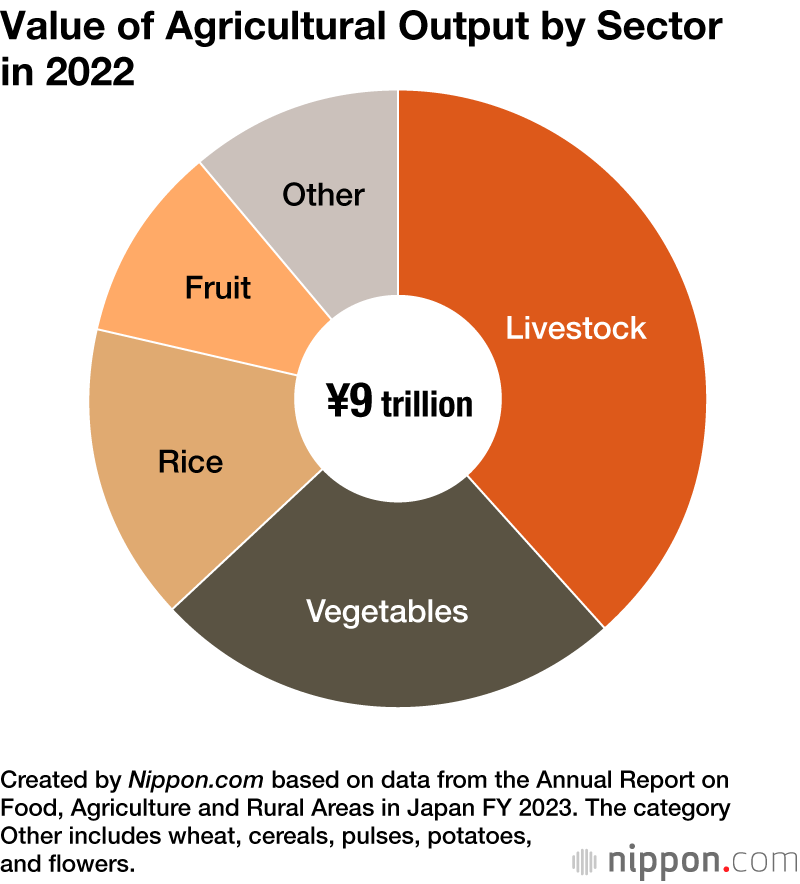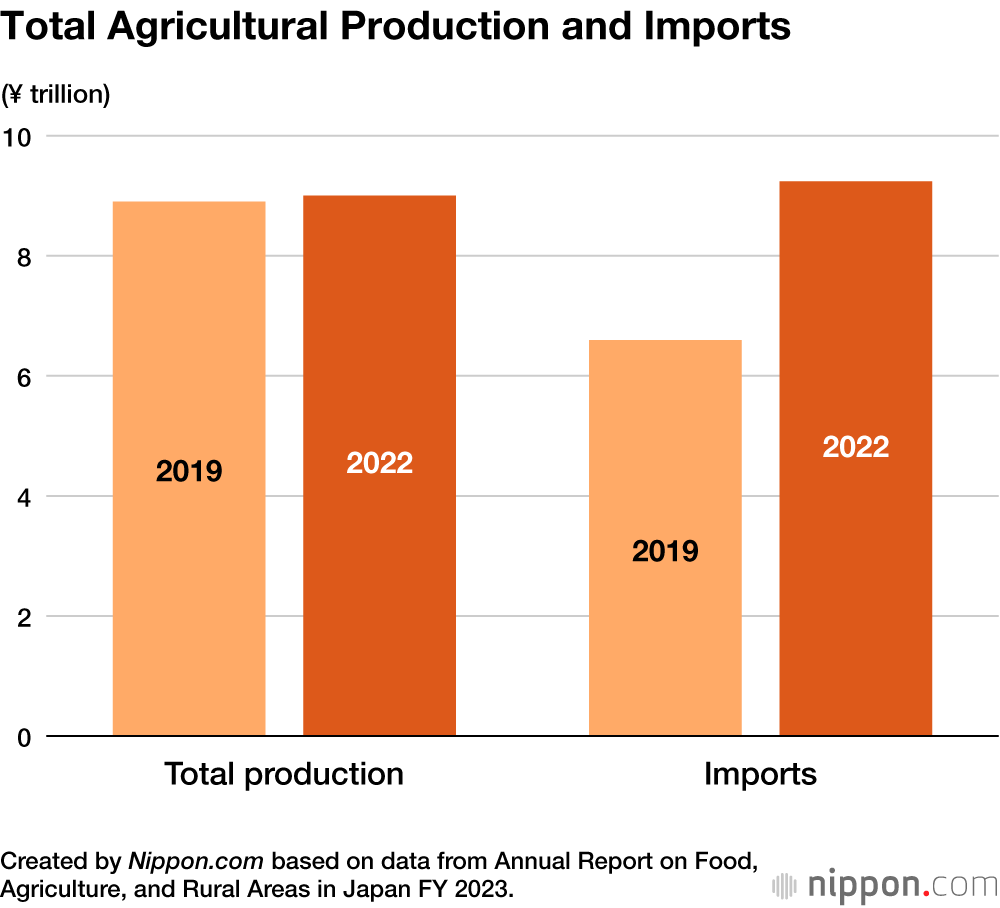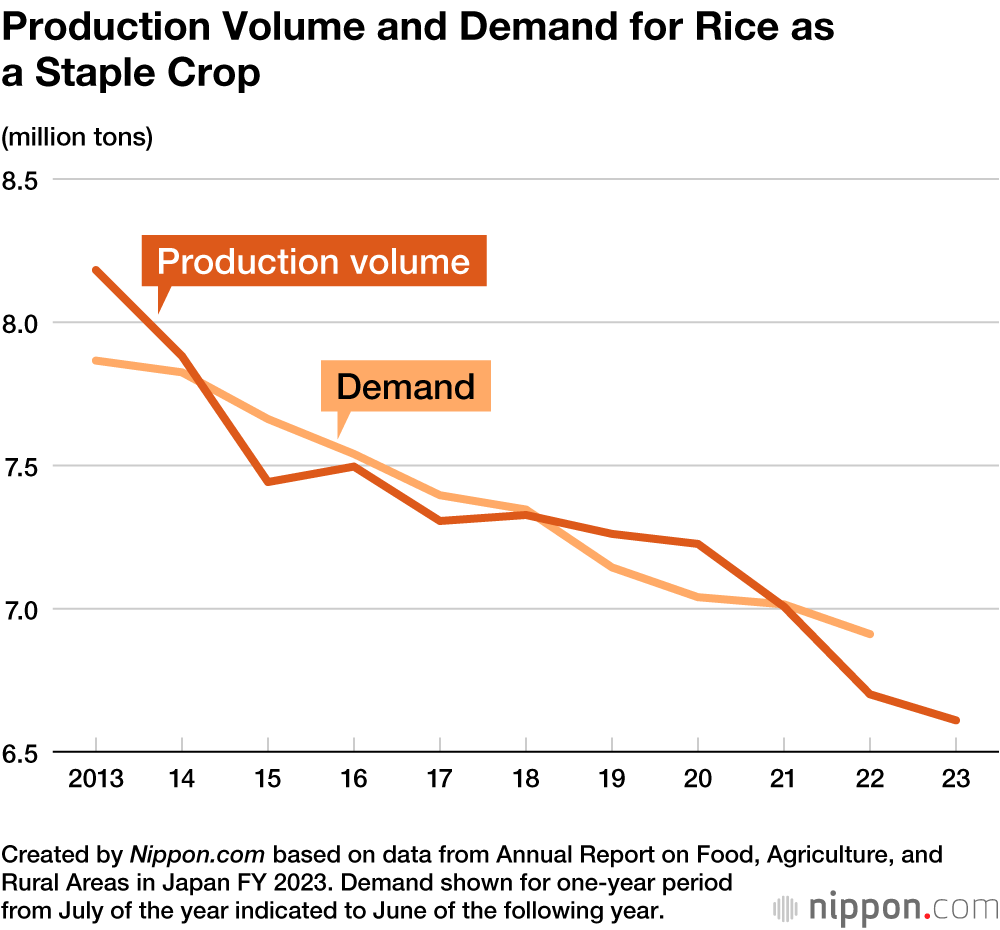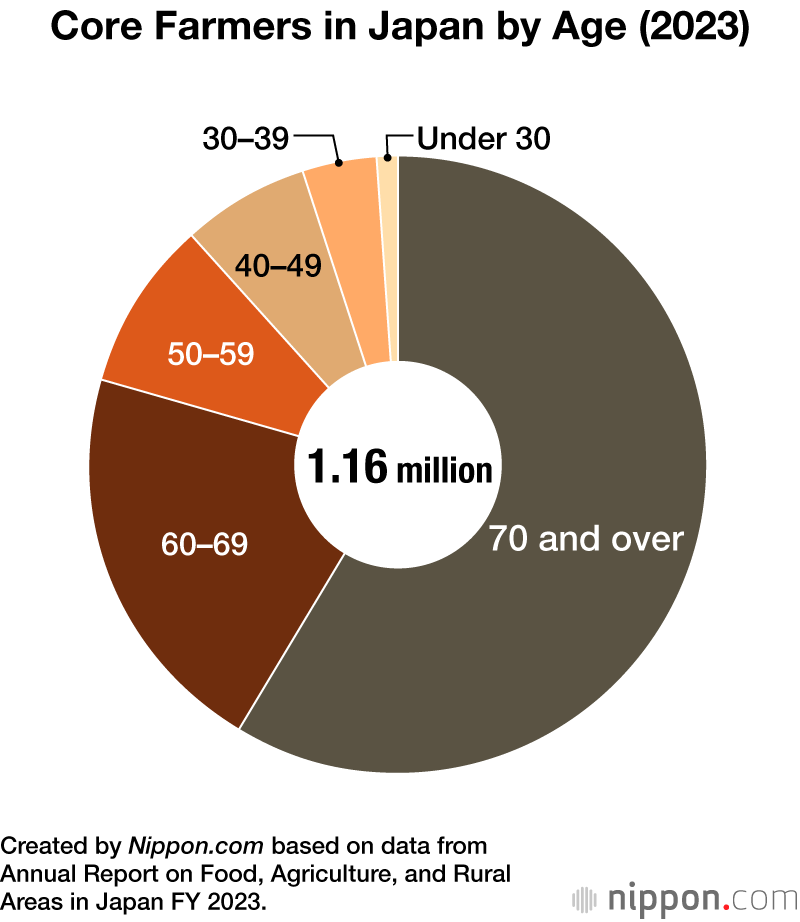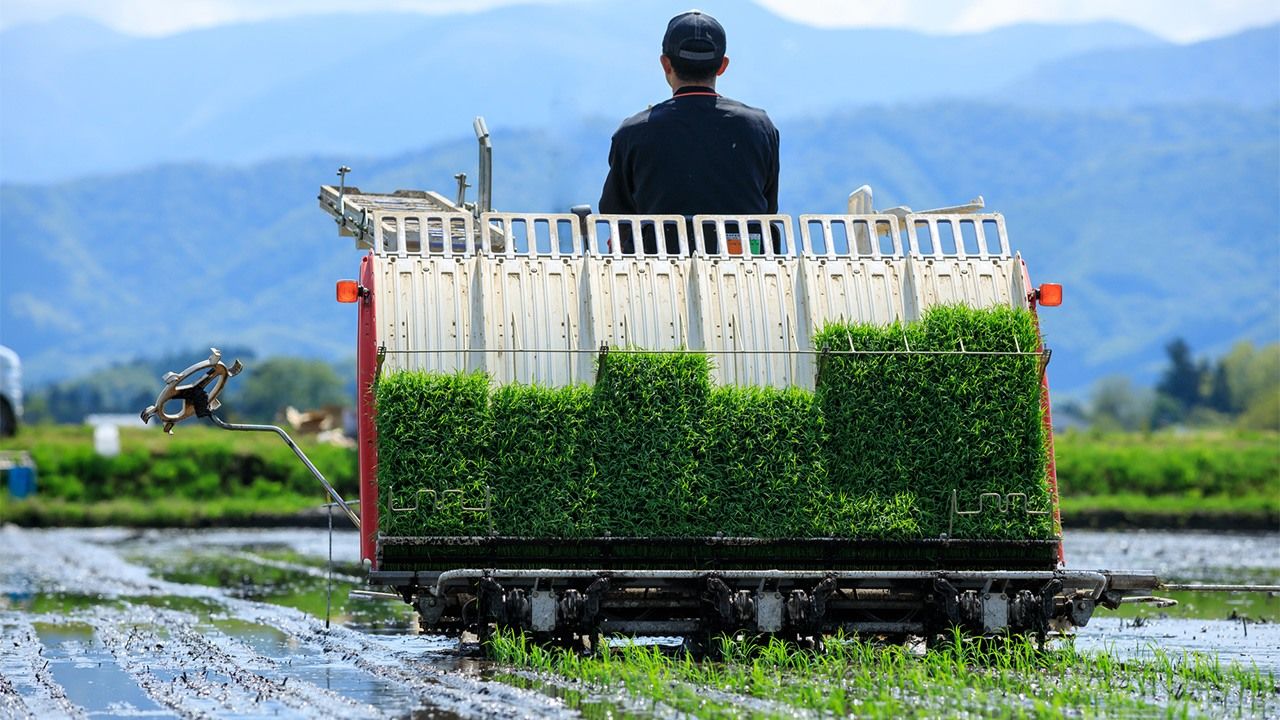
Japan’s Agricultural Imports at Around Level of Total Domestic Output
Economy Food and Drink- English
- 日本語
- 简体字
- 繁體字
- Français
- Español
- العربية
- Русский
Japan’s total agricultural output in 2022 increased by 1.8% over the previous year, to ¥9.0 trillion, according to a 2023 white paper on agriculture issued by the Ministry of Agriculture, Forestry, and Fisheries. Annual agricultural output was around ¥10 trillion during the 1990s, but has fallen to around ¥9 trillion in recent years.
The breakdown of the value of agricultural output by sector is shown in the diagram below. Livestock led the way at ¥3.5 trillion (38.5%), followed by vegetables at ¥2.2 trillion (24.8%), rice at ¥1.4 trillion (15.5%), and fruit at ¥0.9 trillion (10.3%). Rice output increased by 1.8% in value year on year as prices recovered due to the decrease in private-sector inventories resulting from the shift away from rice as a staple crop.
By prefecture, Hokkaidō ranks first for agricultural output at ¥1.29 trillion, followed by Kagoshima at ¥0.51 trillion, Ibaraki at ¥0.44 trillion, Chiba at ¥0.37 trillion, and Kumamoto at ¥0.35 trillion.
Increase in Value of Agricultural Imports
Meanwhile, the value of agricultural imports has surged in recent years with the steady weakening of the yen. Despite a 2.0% drop to ¥9.1 trillion in 2023, the total exceeded the value of all domestic agricultural production for the same year. The value of imports has increased by over 40% since 2020, when the total was ¥6.2 trillion.
The primary source of agricultural imports for Japan are the United States, China, Australia, Brazil, Thailand, and Canada, in that order, with those six countries accounting for 60% of all imports. Notably, 99.8% of wheat imports come from the United States, Canada, and Australia.
In 2023, production of rice as a staple crop was 6.6 million tons, down 1.4% from the previous year. Demand in 2022 totaled 6.9 million tons, a decrease of more than 10% compared to a decade earlier. Given the fall in demand, rice has increasingly been used in recent years for flour or animal feed.
Aging Farmers
According to the white paper, Japan’s “core persons mainly engaged in farming” totaled 1.16 million in 2023, or roughly half the number of 20 years ago. The average age of farmers in Japan is 68.7, while only 10% of farmers, or 133,000, are 49 or younger.
(Translated from Japanese. Banner photo © Pixta.)

